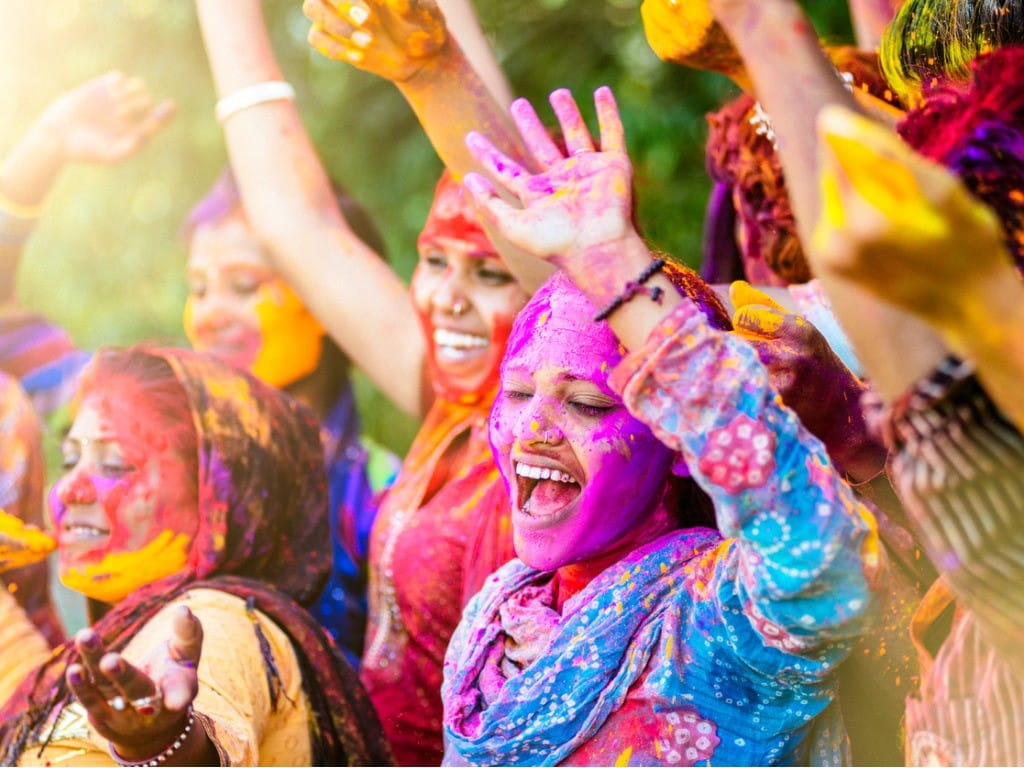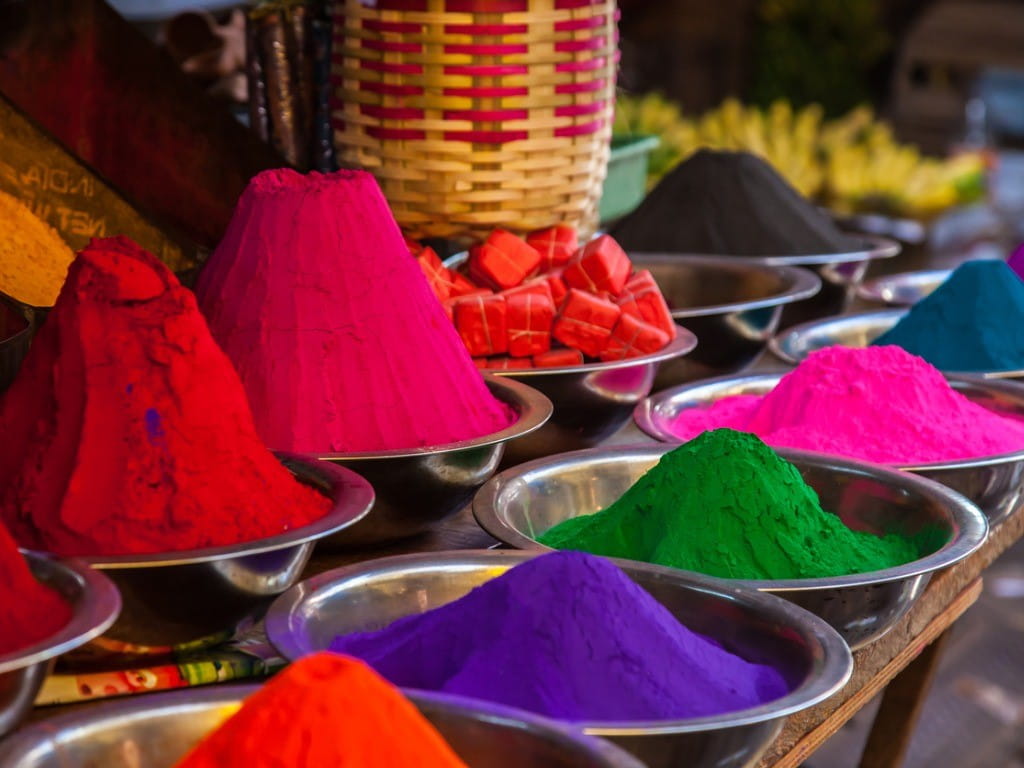Are Holi Colors Safe?

The Bottom Line
Part of the Hindu Holi celebration is throwing brightly colored powders into the air and onto others. These powders should be from safe and natural sources, but some contain metals and other potentially dangerous substances.

The History of Holi
Holi is a joyous annual Hindu festival that marks the arrival of spring. The festival includes celebrants throwing brightly colored powders into the air and onto each other.
What are Holi powders made of?
Holi colors, called gulal in Hindi, were traditionally made from natural sources. These natural colors have short shelf lives, and it is difficult or expensive to make natural blues and greens as vibrant as newer, synthetic options.
Synthetic gulal are often made of a cornstarch base with pigment provided by Food, Drug, and Cosmetic (FD&C) grade dyes. These FD&C colors in the US are the same synthetic organic chemicals approved for use by the FDA in the products we eat, drink, and put on our bodies. There are, however, some reports of Holi powders made from or contaminated with metal-based pigments (such as copper sulfate, mercury sulfide, chromium iodide, lead oxide, and aluminum bromide), industrial pigments (such as malachite green, methyl violet, auramine O, and rhodamine B), talc, asbestos, mica granules, or ground glass.
Can Holi powder damage your eyes?
Any gritty substance thrown into the eyes is likely to cause eye discomfort. The medical literature contains numerous reports of eye damage from Holi colors, ranging from mild irritation to damage requiring surgical repair (see “This Really Happened”).
Can Holi powders damage your skin?
Skin irritation and itching are common results of exposure to Holi colors. In some cases, burning sensations, dryness, scaling, oozing, and loss of hair have occurred. Some Holi powders can explode or burst into flames if exposed to a source of ignition like a candle, torch, or bonfire.
Is Holi powder toxic if ingested?
Since the ingredients in Holi powders are often unknown and contamination with toxic materials is a real possibility, ingestion poses a risk of toxicity. In addition to gastrointestinal upset, systemic toxicity has been reported, including methemoglobinemia—a life-threatening condition in which blood cannot transport oxygen to the tissues.
How to prepare for Holi
Holi participants can take steps to protect themselves in the following ways:
- Do not wear contact lenses for the festival. Instead, opt for sunglasses or eyewear that offers better protection, such as goggles used for swimming or in chemistry labs.
- Wear a tight-fitting mask over your nose and mouth to minimize the amount of powder inhaled or swallowed. If you inhale the powder and have difficulty breathing, move to fresh air immediately. If the symptoms are severe or persistent, seek care from a healthcare provider.
- Wear clothes that cover your arms and legs to limit the amount of powder that reaches your skin.
After exposure to Holi colors
- Gently wash the powder off as soon as possible while keeping it out of your mouth and eyes.
- Change into clean clothing and do not wear Holi powder-contaminated clothes until they have been thoroughly laundered.
- In the event of an eye exposure, immediately rinse the eye for 15 minutes in water that is a comfortable temperature and a comfortable pressure. If you experience severe or persistent pain, changes in vision, or sensitivity to light, seek care from a healthcare provider immediately.
If you suspect someone has been exposed to Holi powder and is having a problem, check the webPOISONCONTROL online tool for guidance or call Poison Control at 1-800-222-1222.
Lindsy Liu, PharmD
Certified Specialist in Poison Information
Poisoned?
Call 1-800-222-1222 or
Prevention Tips
- Only purchase Holi colors from reputable sources.
- Opt for naturally dyed powders if possible.
- Protect your eyes. Do not wear contact lenses to the celebration; wear sunglasses or protective goggles if you can.
- Protect your lungs by wearing a face mask over your nose and mouth.
- Wear clothes that cover your arms and legs.
This Really Happened
A 57-year-old man developed eye redness, excessive tearing, and a painful gritty sensation in his eyes after participating in a Holi festival 3 days earlier. He had a fever for 2 days before seeking care from a healthcare provider. He had scratches on his cornea, swelling of his eyelids and surrounding skin, and wounds with evidence of growing infection. He was treated with antibiotics, artificial tears, and reconstructive surgery (from Chauhan et al., 2007).For More Information
Science behind Holi: the festival of colors. Google Arts & Culture. Accessed April 14, 2025.
References
Poisoned?
Call 1-800-222-1222 or
Prevention Tips
- Only purchase Holi colors from reputable sources.
- Opt for naturally dyed powders if possible.
- Protect your eyes. Do not wear contact lenses to the celebration; wear sunglasses or protective goggles if you can.
- Protect your lungs by wearing a face mask over your nose and mouth.
- Wear clothes that cover your arms and legs.
